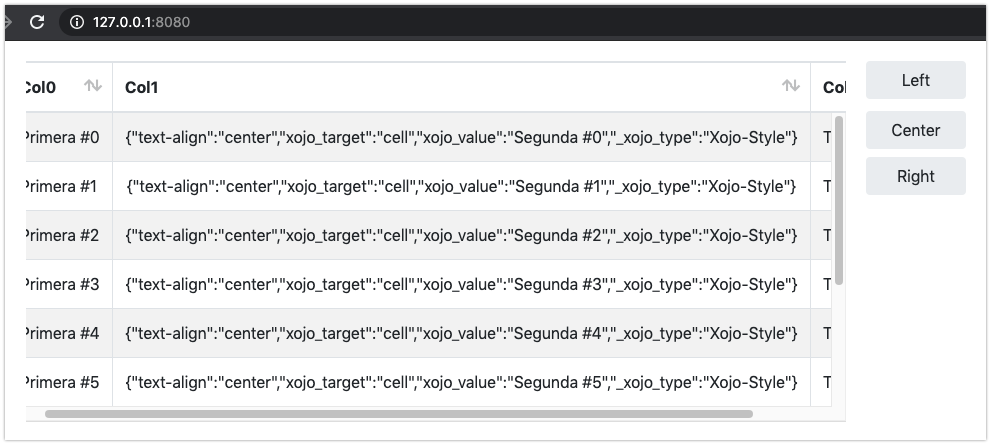


It’s the very same table but using some Custom Cell Renderers: It can be okay if you just have one action, as you can listen to `SelectionChanged` event and do whatever you want with it, but what if you want more? Let’s fix that! Now we have two problems, it looks a bit boring, and also lacks some interactivity. You might normally add the data from a database or a web API, in this example we will just hard-code some rows to avoid any noise and focus on cells: table.AddRow(" 19:32:40", "Ricardo Cruz", "4b8c79a (master)", "Created", "") Let’s take a look to a simple WebListBox:
Xojo weblistbox how to#
In the second post, you will learn how to create your own. This post is the first of a two part series, in this first post, you will learn how to use Custom Cell Renderers that have been created already.
Xojo weblistbox code#
They allow you to create reusable pieces of code to enhance your table cells. Xojo Web 2.0 comes with a hidden gem called Custom Cell Renderers. Remember, small performance improvements here and there can mean large improvements to your app responsiveness overall.Įric: to the XojoTalk Podcast with Eric & Paul and read this other post from Eric on Xojo Networking.If you are creating a web application, you’ve already noticed most of the time you are using WebListBox controls. First work on the functions that take the longest, and then look at commonly used methods to see if you can speed them up using these tips. To make sure there isn’t a blank space in the UI while it is invisible, an identical blank Listbox can be put behind the Listbox in use, or a “please wait” image can be used instead, but you have to remember that the window may be resizable and the list may be resized too.Īnd don’t forget to use the Xojo Profiler to check your code performance when you see it needs some work. This is not necessary for most uses, but if you are populating a Listbox with a very large amount of data, this can bring a big performance improvement. Although it is not as fast as the single line of code to add the row, it is still much faster than adding a blank row and then populating each cell one by one.Īnother tip is to make a Listbox invisible while rows are being added, and visible again when it is ready. This makes the code easier to read and edit. Take the following example, which may look familiar: If we can reduce inefficiencies in loop code, we can make significant performance improvements. Loops are used to repeat blocks of code over and over again. …you can store values in variables first: And if you don’t want long and hard to read lines of code like this… MyListbox.AddRow rs.Field(âvalue1â).StringValue, _ For a WebListbox on a WebPage it is a very noticeable difference. If your lists are long and have several columns you will see a difference. This works significantly faster and is less code to write. This is inefficient and can be improved by adding the entire row to the list in one go: MyListbox.Cell(MyListbox.LastIndex,3) = z MyListbox.Cell(MyListbox.LastIndex,2) = y MyListbox.Cell(MyListbox.LastIndex,1) = x MyListbox.Cell(MyListbox.LastIndex,0) = w I often see code like this to add rows to Listboxes: MyListbox.AddRow " " If you have a feature that processes a large volume of data, and various different methods get called from inside a loop, flattening the code would help improve performance. If the code within the CalculateTotals method were put directly into our loop instead, 5,000 calls to the method would be eliminated, so the loop code would run faster. In our tiny example above, the CalculateTotals method gets called 5,000 times. Xojo is great for building structured code using methods, but we can speed things up in a loop by reducing the number of calls to methods. If our Listbox had 5,000 rows, the loop would calculate this same value 5,000 times! We get improved performance by calculating it only once: Dim n As Integer = MyListbox.ListCount - 1 // or MyPopupMenu.ListCount-1 Here the For loop is calculating the value of (MyListbox.ListCount – 1) each time it goes around the loop. Also works with MyPopupMenu.ListCount-1įor i As Integer = 0 to MyListbox.ListCount - 1


 0 kommentar(er)
0 kommentar(er)
